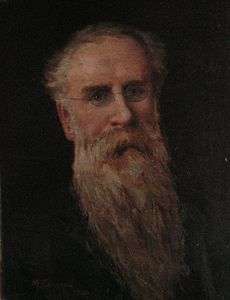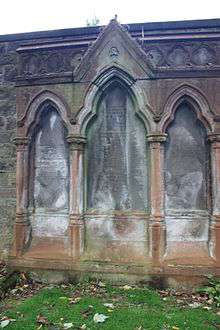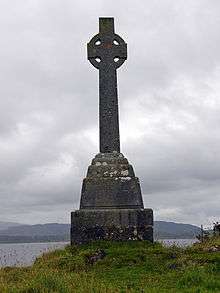Duncan Cameron (Scottish inventor)


Duncan Cameron (12 October 1825 – 19 February 1901) was a Scottish businessman, owner of The Oban Times newspaper and the inventor of the "Waverley" pen-nib.
Duncan Cameron, along with his brothers John and Donald Cameron, were the owners of the Edinburgh-based printing and stationery firm of Macniven and Cameron.[1] Duncan Cameron joined the firm in 1850, and in 1865 received a patent for the "Waverley" nib for the company.[1] The popular "Waverley" was unique in design with a narrow waist and an upturned tip.[1] The tip's design made the ink flow more smoothly on the paper. The "Waverley" was named after the Waverley novels of Sir Walter Scott (1771–1832), which were still hugely popular at the time.
In 1882, Cameron purchased The Oban Times newspaper for £4,000 following the death of its founder, James Miller.[2] Cameron appointed his twenty-one-year-old son, also named Duncan Cameron, as the editor.[3] The senior Cameron's oldest daughter, Flora Macaulay, became the paper's editor when her brother Duncan left for Edinburgh to join the family's stationery business and another brother, Waverley, drowned at Lismore. Flora stayed involved with The Oban Times until her death at 99 in 1958. She was succeeded as editor by her nephew, Alan Cameron.[4]
Personal life
Duncan Cameron married Mary Brown Small on 25 June 1858 in Haddington, East Lothian, Scotland.[5] Cameron's wife was a member of the Smalls of Dirnanean.
A younger daughter, Mary Cameron, was a Scottish portrait artist of some renown.[6]
On the death of his son Waverley, Cameron erected a memorial in his name on Lismore.[7] The inscription at the base of the cross reads:
This Monument Is Erected to the Memory Of
Waverley Arthur Cameron
Of The Oban Times
Drowned on the 4th of June 1891
By The Foundering of a Sailing Boat Off This Spot
"To Thee The Love of Woman Hath Gone Down:
Dark Flow Thy Tides O'er Manhood's Noble Head.
O'er Youth's Bright Locks And Beauty's Flowery Crown.
Yet Must Thou Hear A Voice: Restore The Dead:-
Earth Shall Reclaim Her Precious Things From Thee
Restore, Restore The Dead, Thou Sea"
Erected By His Sorrowing Father
Robert Blair, a Scottish minister at Cambuslang, Scotland, was Cameron's son-in-law.
Duncan Cameron died on 19 February 1901 in Edinburgh, Scotland[8] and is buried in the family plot in Dean Cemetery in Edinburgh, which lies on the obscured lower southern terrace, towards the east end.
References
- 1 2 3 "Macniven and Cameron". Retrieved 16 February 2013.
Grace's Guide, British Industrial Revolution
- ↑ "Skye Camanachd". 21 August 2012. Retrieved 16 February 2013.
Macaulay Cup Damage
- ↑ Gaskell, Philip (1980). Morven transformed a Highland parish in the nineteenth century (1st pbk. ed.). Cambridge [England]: Cambridge University Press. ISBN 0521297974.
- ↑ "Alan Cameron Obituary". The Sunday Herald, Scotland. 16 January 2001. Retrieved 17 February 2013.
- ↑ "Scotland, Marriages, 1561–1910". Family Search, Church of Latter Day Saints, Salt Lake City, UT, USA. Retrieved 16 February 2013.
Film: 6035516
- ↑ "Death of an Edinburgh Lady Artist". The Scotsman Newspaper, Edinburgh, Scotland. 18 February 1921. p. 4.
- ↑ "Walking Highlands". Retrieved 17 February 2013.
Tirefour Broch and Castle Coeffin from Achnacroish
- ↑ "1901 Cameron, Duncan, Edinburgh Sheriff Court Inventories". ScotlandsPeople.
Reference SC70/1/401
